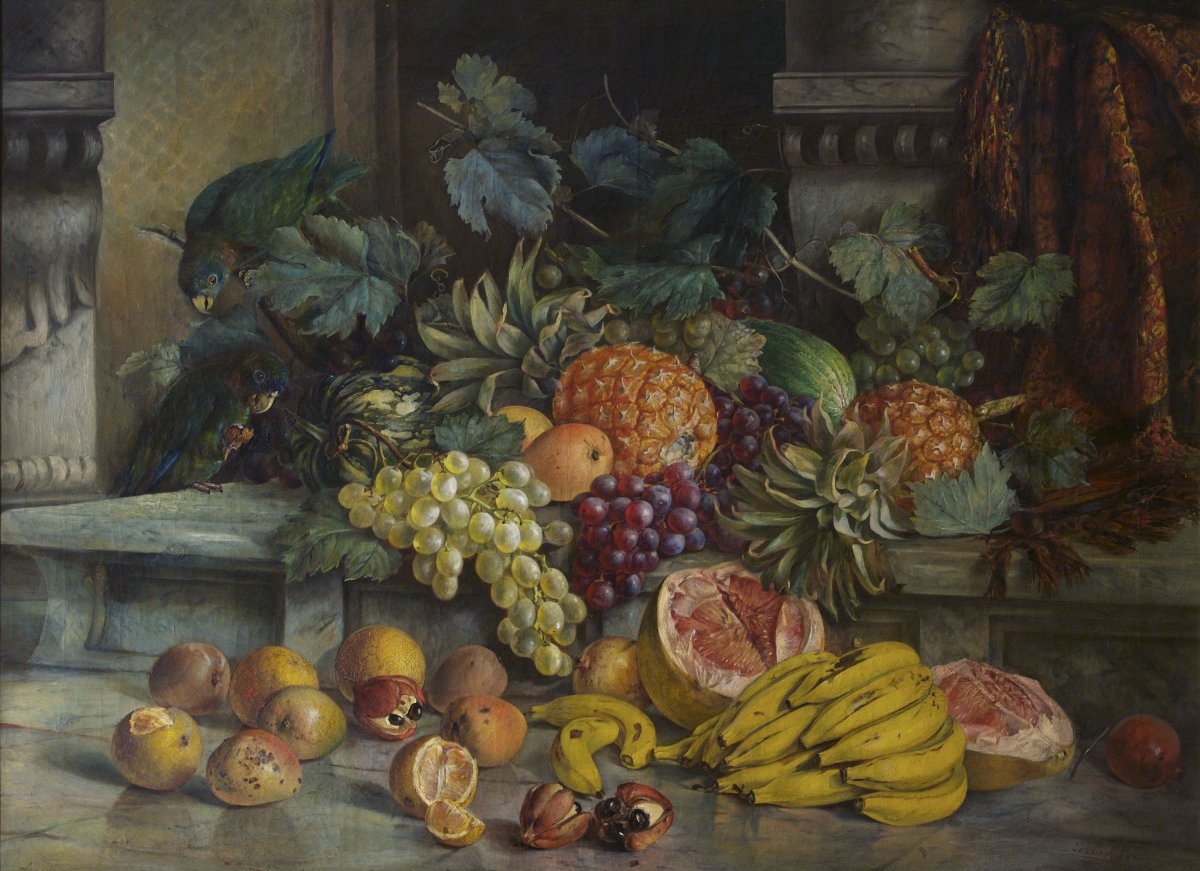‘Jamaica Fruit’, a painting by Jessica Lee, is a traditional still life showing a lush arrangement of fruit on a classical marble plinth draped with brocade. Two parrots look on, one nibbling on a piece of fruit.
Still life has been a genre of European art since the 16th century symbolising hedonistic pleasures; while ‘memento mori’ scenes of skulls, dead animals or lit candles reminded of life’s brevity.
Lee’s work showcases universally found fruit, and others specifically originated from Jamaica. Among the leaves at the back is the green and yellow mottled skin of a giant Jamaican pumpkin; at front are citrus fruits – a large pomelo split open, and several smaller ugli fruits, partially peeled. Three ackee fruits, split to reveal shiny black seeds, are the national fruit of Jamaica, and key ingredient of its famous dish, ackee and saltfish. The yellow-billed parrots, are also endemic to Jamaica.
What else could ‘Jamaica Fruit’ tell us? It celebrates the abundant produce of the Caribbean island, while inherently reflecting how the Commonwealth enriched post-war Britain, economically, socially and culturally, from the arrival of the first passengers from Jamaica on the Empire Windrush in 1948. Made in 1962, Lee’s work is one of eight paintings presented to the Government Art Collection by the Commonwealth Institute that year. The gift marked the inauguration of the Institute, officially opened on 6 November by Queen Elizabeth II in a new iconic building in Holland Park, London. The Institute's purpose was ‘...to foster the interests of the Commonwealth by information and education services designed to promote among all its people a wider knowledge of one another and a greater understanding of the Commonwealth itself.’
Commonwealth Institute, 1962. ‘A Commemorative Handbook Issued on the Occasion of the Opening of the New Institute on Tuesday 6th November 1962 by Her Majesty Queen Elizabeth II, Etc.’)
